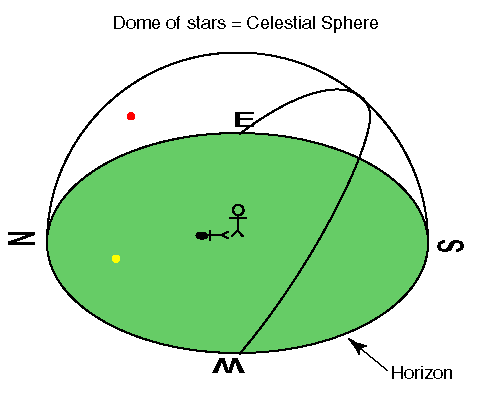
The fictional celestial sphere is an example of a scientific model. Although the model is not the same as reality, it has features that help one discuss, predict, and understand real behavior. (You might want to think about the meaning of the word "understand" in a situation where the model and reality differ so extensively.)To Measure the Sky by Frederich Chromey, p. 67
In the below diagram I've placed a stick figure of a person in a green open field, and marked the cardinal directions on the horizon with the appropriate letters (NESW). Unless you live in Kansas, real horizons are partially obstructed, but we can imagine what the view would look like without the bell banner, etc. getting in the way. The horizon would then be a 360° circle where sky meets ground.
Perspective drawing can be difficult to interpret (particularly when non-artists like me draw them). In the below drawing, I mean the red star to be on the far side of the dome, and hence a little above the NE horizon. The yellow star, on the other hand, I mean to be on the front side of the dome, and hence a bit above the NW horizon as viewed by the stick figure.
